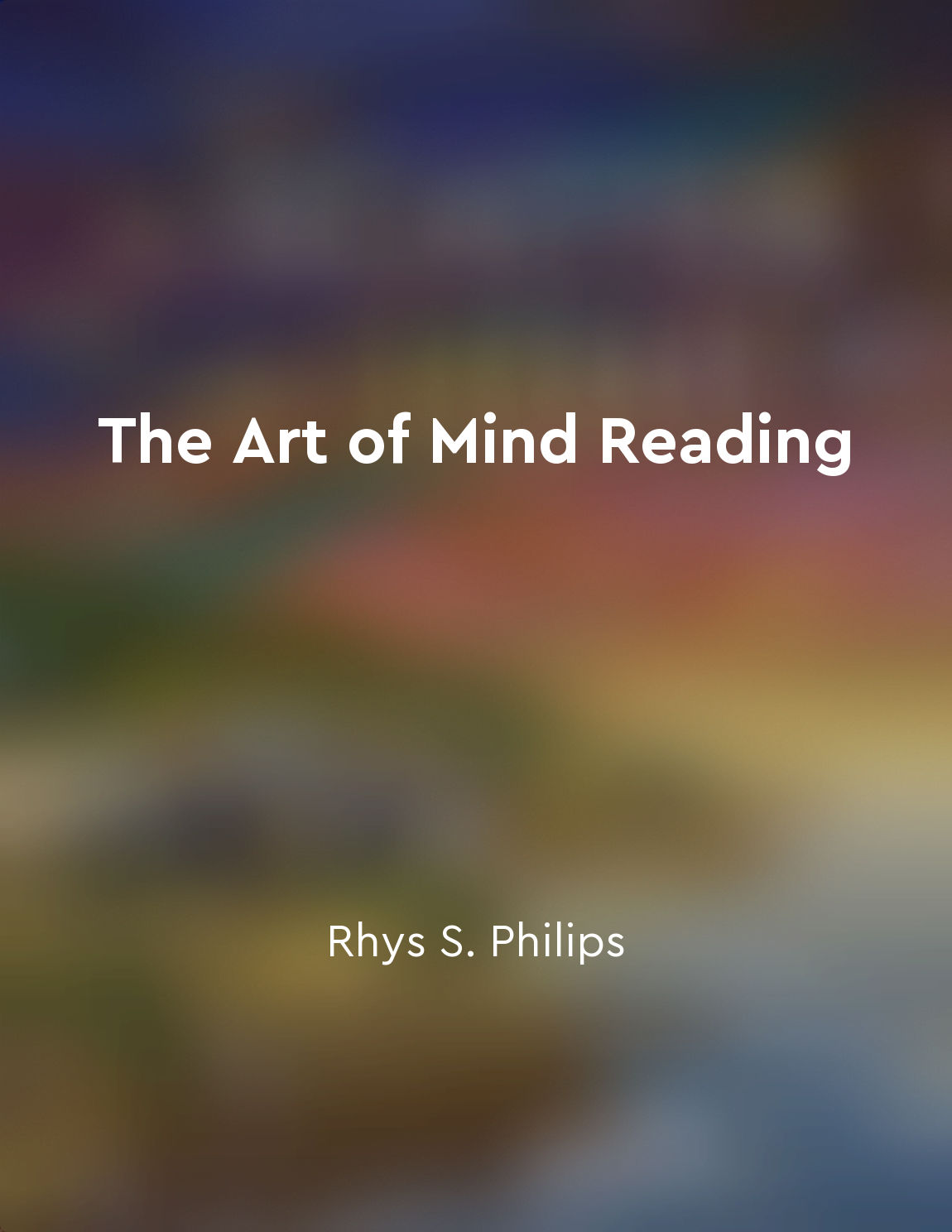Use a combination of verbal and nonverbal cues to gain insights into someone's thoughts from "summary" of The Art of Mind Reading by Rhys S. Philips
To truly understand what someone is thinking, it is essential to pay attention to both what they are saying and how they are expressing themselves nonverbally. Verbal cues, such as the words a person chooses to use, can provide valuable insights into their thoughts and feelings. However, it is important to remember that words can be deceptive, as people may not always say what they truly mean. This is where nonverbal cues come into play. Nonverbal cues, such as body language, facial expressions, and tone of voice, can often reveal more about a person's thoughts and emotions than their words alone. For example, someone may say they are feeling fine, but their crossed arms and furrowed brow may indicate otherwise. By combining verbal and nonverbal cues, you can gain a more comprehensive understanding of what someone is really thinking. When analyzing someone's thoughts, it is important to look for inconsistencies between their verbal and nonverbal cues. For instance, if someone says they are excited about a new opportunity, but their tone of voice is flat and their body language is closed off, it may indicate that they are actually feeling hesitant or unsure. Paying attention to these discrepancies can help you uncover the true thoughts and feelings that someone may be trying to conceal. It is also crucial to consider the context in which the verbal and nonverbal cues are being expressed. For example, someone may use sarcasm or humor to mask their true emotions, so it is important to take into account the overall tone of the conversation. Additionally, cultural differences can impact how people express themselves nonverbally, so it is important to be mindful of these differences when interpreting someone's thoughts.- By using a combination of verbal and nonverbal cues, you can gain deeper insights into someone's thoughts and emotions. Paying attention to both what someone is saying and how they are expressing themselves nonverbally can help you uncover hidden truths and better understand the people around you.


